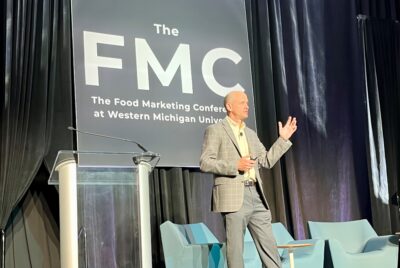With an estimated $3.5 trillion worth of goods at stake across the entire range of U.S. imports, it’s crucial that CPG firms and retailers take proactive steps to stay ahead of tariff uncertainty. By understanding their exposure, reducing their risk and diversifying where possible, they can navigate turbulent times with confidence.
Despite a 90-day pause on tariffs announced on April 9, many consumers are already changing their spending behavior. A recent study by Advantage Solutions shows that households are shifting to lower-cost channels, buying less-expensive smaller packs or more-economical bulk packs, and buying more private brands.
Knowing that the current macroeconomic landscape has injected shock into consumer spending habits, it’s more crucial than ever that retailers and CPGs manage near-term disruptions while protecting long-term value. Stay ahead of the curve with these five key tariff-related strategies and solutions.
1. Act on insights and analytics
Being able to distill complex data into actionable insights is vital to rapidly adjusting strategies in line with customer expectations and spending habits. It’s imperative that retailers and brands search for key points of differentiation, especially around assortment and pricing strategies, as households start to shift their buying behavior.
2. Create a strong network of suppliers
Determining tariff exposure is the first step in identifying solutions to minimize risk. With this analysis in hand, building a diversified network of suppliers and manufacturers for products, ingredients, packaging and other components can help protect margin and preserve quality amid uncertainty.
3. navigate the supply chain to limit disruption
Retailers will need to better manage inventory as a margin lever with a greater focus on forecasting and deductions. CPGs and retailers who shift suppliers to lower-tariff locations must quickly re-align their supply chain to accommodate. New shipping routes, a new port of call and new warehousing will create logistical issues that need to be coordinated, along with increased activity around order-to-cash and deduction management.
4. Continue to invest in omni-commerce
Brands may be tempted to absorb cost by cutting spend in omnichannel marketing but abandoning this high ROI tactic is likely to backfire in both the short- and long-term. Brick-and-mortar retail will need to be more agile, and in that regard, digitally native disruptors have an advantage. Whatever the macroeconomic conditions may be, optimizing shopper engagement and driving conversion remains a top priority while utilizing physical stores is a point of differentiation.
5. Focus on cost to preserve margin flexibility
There are often long-term consequences when brands sacrifice quality or reduce service as a cost-cutting measure. As costs continue to increase, CPGs and retailers can employ other tactics, such as augmenting in-house sales teams, outsourcing back-office functions and building out private brand programs.
Turn our unrivaled vantage point into your Advantage. Download your copy of Navigating uncertainty in retail in the age of ever-changing tariffs.




